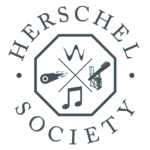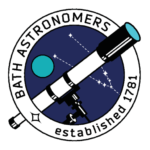Jocelyn Bell Burnell
Dame Susan Jocelyn Bell Burnell discovered the first pulsars in 1967. She was Dean of Sciences at the University of Bath from 2001 to 2004, and, from 2002 to 2004, she was President of the Royal Astronomical Society. In 2018, she was awarded the Special Breakthrough Prize in Fundamental Physics and donated the prize to to help female, minority and refugee students to become research physicists. She was the second ever woman to receive the Royal Society’s Copley Medal in 2021.
Born in 1943
Caroline Herschel
Caroline discovered 8 comets and NGC 205 (to be assigned Messier 110). She produced the Catalogue of Stars correcting Flamsteed’s earlier work. Her work cataloguing 500 new nebula and clusters and collating existing objects for her nephew, John Herschel, led to the New General Catalogue (NGC) still used today. She lived in Bath from 1772 to 1782 in various properties including 19 New King Street.
1750 – 1848
William Herschel
William was an accomplished musician who took up astronomy and telescope building as a hobby. He discovered the planet Uranus in 1781, studied double stars, and catalogued the northern hemisphere’s night sky with the support of Caroline. In 1782 he became the Court Astronomer to King George III. In 1800 he discovered infrared radiation. He lived in Bath from 1766 to 1782 in various properties including 19 New King Street.
1738 – 1822
Carole
Mundell
Professor Carole Mundell joined the University of Bath in 2015. She was Head of the Department of Physics from 2016 to 2018 and she established a new Astrophysics research group, concentrating on high-energy extragalactic astrophysics of black hole driven systems and their environments. She was the Chief International Science Envoy at the Foreign, Commonwealth & Development Office from January to October 2021 and prior was the Chief Scientific Adviser at the Foreign & Commonwealth Office. In March 2023, she became Director of Science for the European Space Agency, and Head of ESAC, near Madrid, Spain.
Edward
Pigott
Edward was an astronomer who made significant contributions to the study of variable stars. He discovered Messier 64, the Black Eye Galaxy, in 1779. He reported the discovery of Eta Aquilae’s variable nature to the Royal Society in 1783. He discovered the comet of (D/1783 W1). He was a good friend of John Goodricke and corresponded with William Herschel and Nevil Maskelyne. In 1795 he discovered variables, R Coronae Borealis and R Scuti. He lived in Bath from 1796 to his death in 1825.
1753 – 1825
Mary
Ashley
Mary lived at 16 New King Street in Bath at the end of the nineteenth century.
She was an expert in selenography, the study of the Moon. She may have had her own observatory or at least her own instrument (4″ Wray refractor) because we know she used to study the Moon and existing lunar surface maps and often updated the latter. She was a member of the Selenographical Society. Some of her notebooks are held in the British Astronomical Association’s archive.
Her occupation in the 1891 Census is recorded as Astronomer.
1842 – 1903


